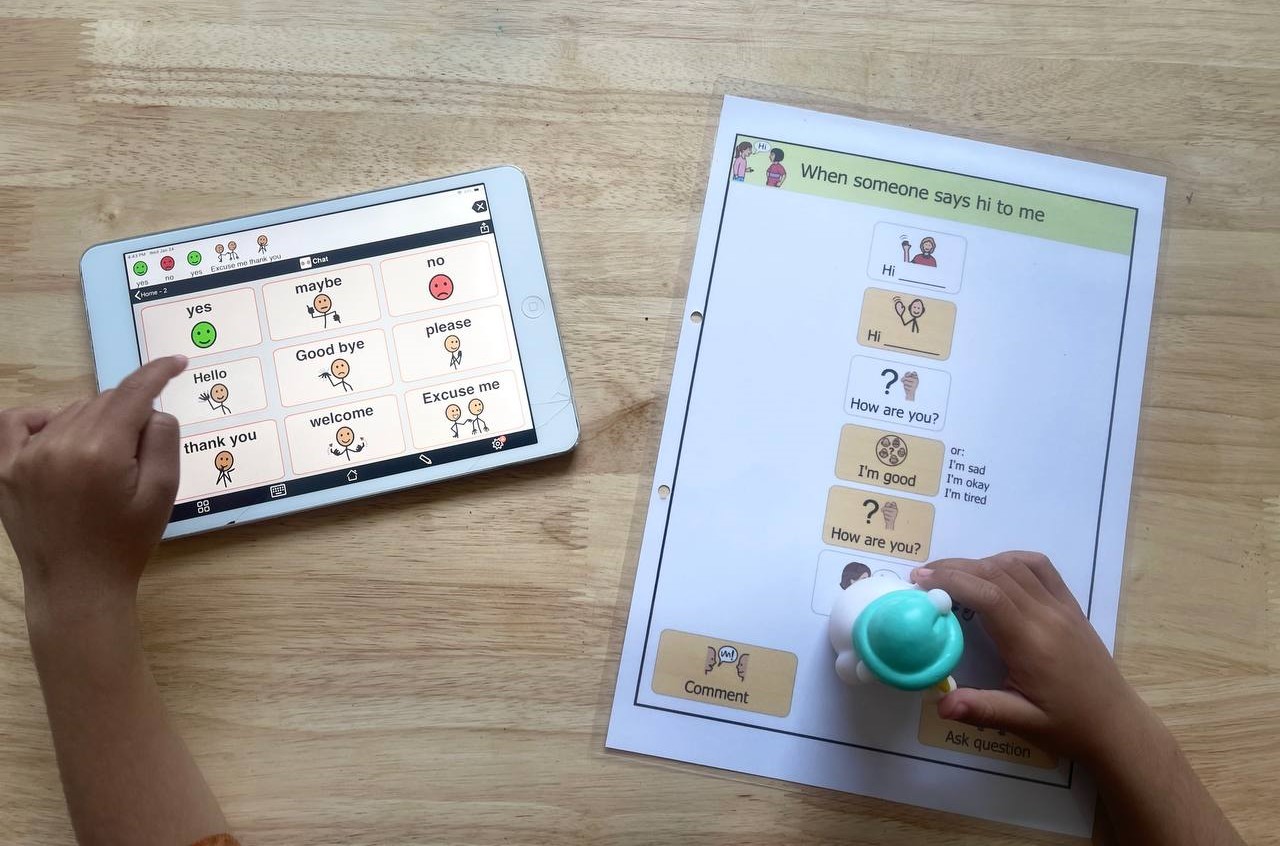For individuals with speech difficulties, effective communication can be a daily challenge. Augmentative and Alternative Communication (AAC) tools bridge this gap, empowering individuals to express themselves and engage with the world around them. In recent years, AAC apps have emerged as powerful and accessible options, offering a diverse range of features and functionalities.
Understanding AAC Apps:
AAC apps are software programs designed for tablets or smartphones that enable communication through various methods. These can include:
- Symbol-based: Utilizing pictures or icons to represent words and concepts.
- Text-based: Typing, word prediction, and even eye-tracking technology for text entry.
- Speech-generating: Outputting synthesized voices based on selected words or phrases.
AAC apps cater to a wide spectrum of needs and abilities. Some apps focus on core vocabulary and basic communication, while others offer advanced features like grammar support and sentence construction tools. The level of complexity and customization varies greatly, ensuring suitable options for individuals with diverse communication challenges.
Benefits of AAC Apps:
The potential benefits of using AAC apps are numerous:
- Enhanced communication: AAC apps provide individuals with a reliable and independent voice, fostering greater participation in everyday activities and social interactions.
- Improved language development: Research suggests that AAC apps can stimulate language skills and vocabulary growth, particularly in children with communication difficulties.
- Increased independence and confidence: Effective communication empowers individuals to express their needs and wants, leading to greater autonomy and self-esteem.
- Accessibility and portability: Tablet and smartphone-based apps offer convenient access to AAC tools, making communication readily available in various settings.
Considerations for Choosing an AAC App:
With the abundance of AAC apps available, selecting the right one requires careful consideration:
- Individual needs and abilities: The app’s level of complexity, communication method (symbols, text, etc.), and features should align with the user’s specific needs and communication skills.
- Age and developmental stage: Apps designed for specific age groups or developmental stages often cater to the evolving communication needs of children and adults.
- Access and control: Compatibility with available devices and input methods (touch, eye-tracking, etc.) is crucial for ensuring accessibility and ease of use.
- Trial options and support: Many developers offer free trials or demo versions, allowing users to test the app’s suitability before committing. Access to ongoing support and resources can be valuable for maximizing the app’s effectiveness.
AAC apps represent a valuable and ever-evolving field within the communication support landscape. By providing individuals with diverse tools and functionalities, these apps empower them to overcome communication barriers and participate more fully in their communities. Careful consideration of individual needs and app features is key to unlocking the potential of AAC apps and facilitating meaningful communication for all.





Leave A Comment